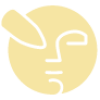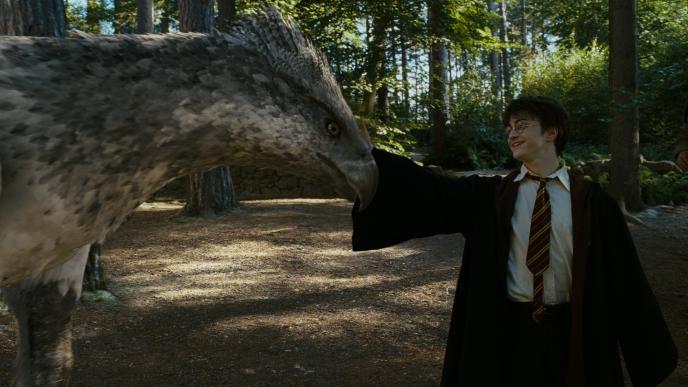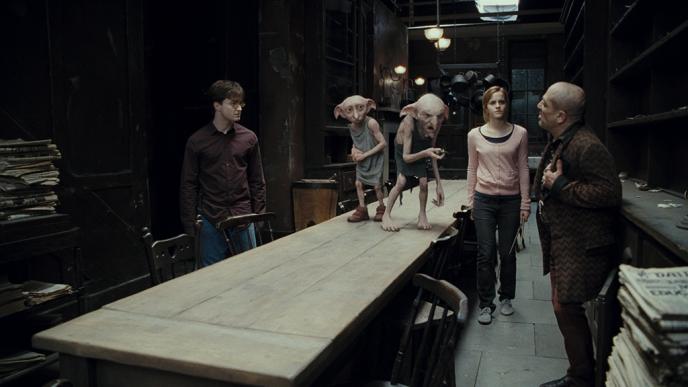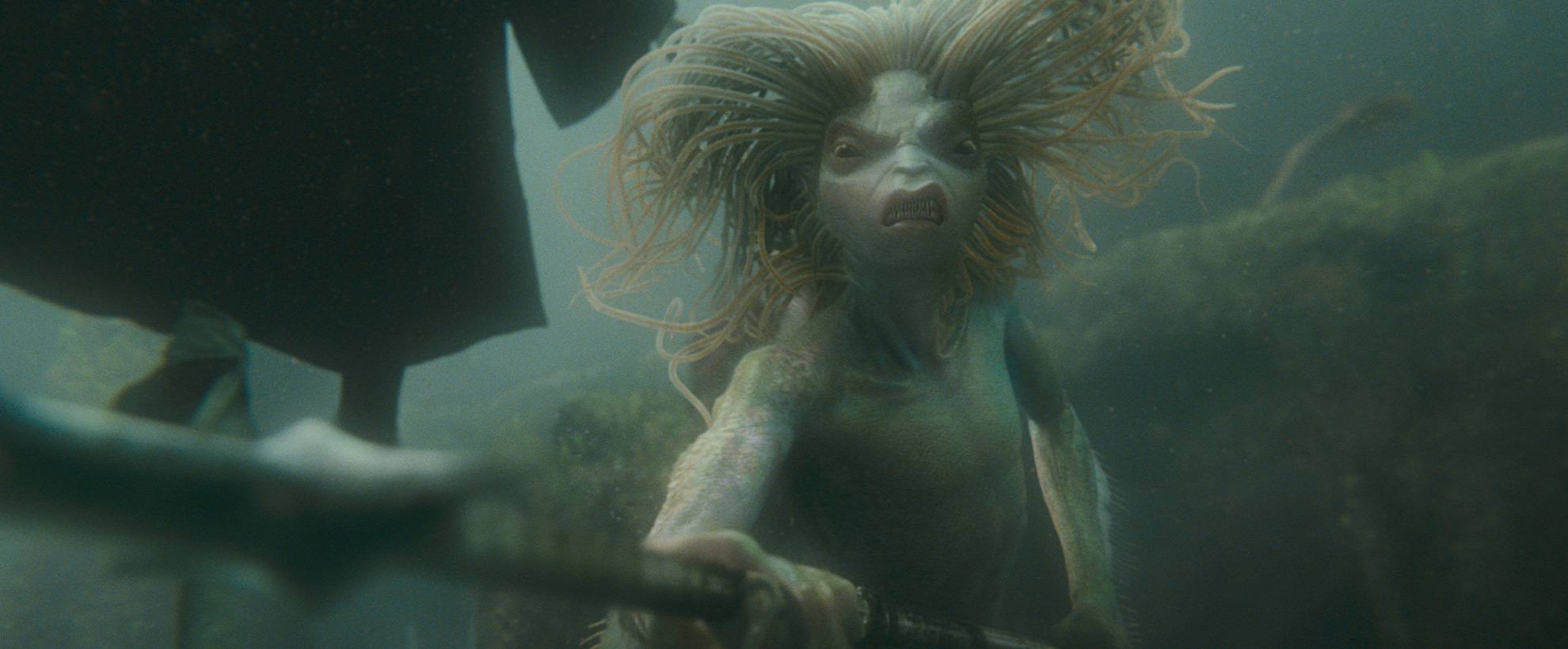
Harry Potter and the Goblet of Fire
Having already triumphed with creatures created for previous Potter films (the Basilisk and the Hippogriff, to name but two) Framestore was once more invited to join the fun. The creative studio faced some of the toughest challenges yet thrown at it by a series that has consistently raised the bar on cinematic digital visual effects. Framestore delivered over 200 shots for Goblet of Fire, including an astonishing underwater sequence, a carriage drawn by seven Pegasus-like creatures, and a cheeky quill pen with a character all its own.
The Framestore team did such an amazing job that you really believe you're swimming with Harry in this mysterious yet beautiful underwater world, even though it only existed in the computer.
Diving into the Triwizard Tournament
The key event in the Goblet of Fire is return of the Triwizard Tournament – a sort of Wizardry World Cup – which had been discontinued for many years because of the high mortality rate. Harry finds himself participating, vying for the Triwizard Cup not only with fellow Hogwarts pupil Cedric Diggory, but also with Fleur Delacour and Viktor Krum, champions from the colleges of Beauxbatons and Durmstrang.
The tournament takes the form of three Tasks, which challenge the contestants in a variety of dangerous magical environments. The Second Task takes place in the huge Black Lake, the mysterious body of water overlooked by Hogwarts. They are to dive into the lake and 'recover what has been taken from them' – a mission which only becomes clear as they explore the mysterious depths. It was the creation of these depths that formed the main part of Framestore's work on the film.
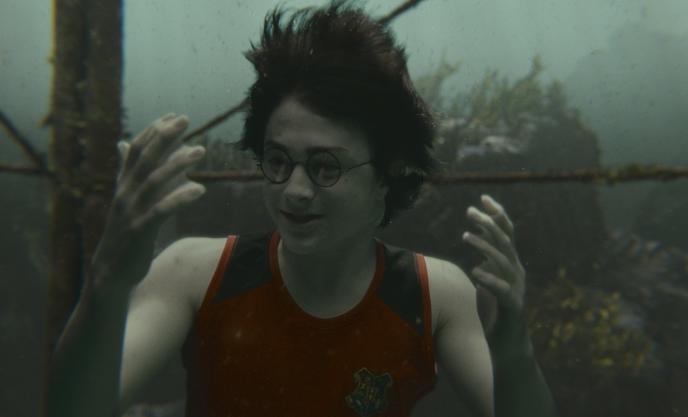
Beneath the Surface
Once under the surface, Harry temporarily mutates; growing gills, webbed fingers and flippery feet to cope with life under water. Fleur and Cedric adapt to life underwater by having a magical air bubble around their mouths, while Viktor becomes half shark. As he travels deeper down through the lake, Harry enters 'forests' of undulating kelp. A mermaid - not the siren-like beauty of popular myth, but a fishier, far less seductive figure, greets him with a song. She leads him to some underwater ruins in which Harry discovers what the purpose of the task is. Four children have been magically bound, and float, suspended and unconscious before him. Harry rescues Ron, and attempts a further rescue, but is warned off by the mer-people – who indicate that the others are to be rescued by his fellow contestants.
However, Fleur has been attacked by highly dangerous creatures called Grindylows (think squid-meets-piranha) and is unable to carry out her rescue. It is up to Harry to use all his wits (and a handy spell or two) to save the final victim and escape the vicious Grindylows...
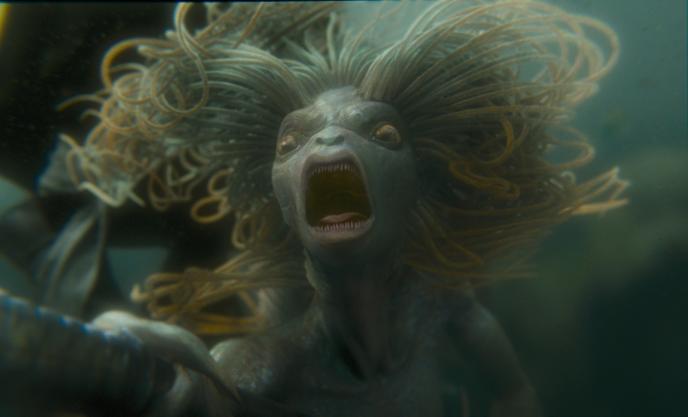
I'm not sure that something like this has ever been attempted before, where the whole of a sub-aqua environment in every shot is completely CG.
Shooting Underwater
The Underwater shoot for the sequence took place over several weeks, largely at Leavesden Studios. Says Tim Webber, 'We shot what we could in the way of underwater blue screen material of the actors performing in a tank, but there were all sorts of limitations placed on them by the demands of the script and the environment. For instance, even with divers in the tank supplying Daniel with oxygen prior to the cameras rolling, we'd still have to wait for the bubbles to clear the shot before action could start, which cut into his available acting time. So, in addition to creating every single element of the underwater environments, we also had to create a CG Harry to carry out some of the action – and not just in long shots'.
Framestore's work began with the creation of the enormous, multi-tiered platforms that are both the location from which the competitors start the Second Task, as well as the site from which the spectators watch. An impressive aerial shot created entirely in the computer introduces these structures – CG constructs in composited lakeland environments – before we move in closer for the lead up to the event.
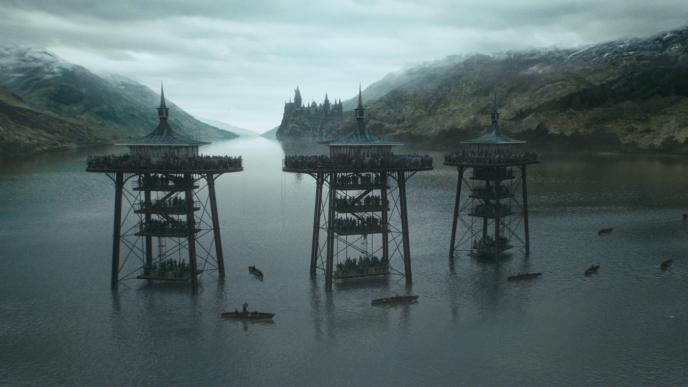
The Grindylows
After Harry dives in, he finds his body adapting itself to the underwater environment, and he soon starts to take advantage of his flippers, webbing and gills, relishing the experience. As he moves deeper into the lake, his (entirely CG) surroundings – the rocks, the plant life – make for an extraordinary and mysterious atmosphere. The Framestore team had originally anticipated creating just three varieties of kelp by way of vegetation, but this grew to more than 10 iterations as the work progressed.
As well as Harry, CG versions of the four unconscious victims and the Krum-Shark were also required. Of the CG creatures, the Grindylows were the most challenging, not least because there are more than 100 of them on screen in some shots. Whilst automated 'cycles' were used in a limited fashion, as much of the Grindylow movement as possible was carried out using hand animation. One tool that proved highly useful was the in-house 'Choreographer' software. This was originally developed in tandem with the Charlie and the Chocolate Factory team who needed something that would help bring large numbers of squirrels to the screen. The software was further developed and refined by the Goblet team to assist them in their Grindylow wrangling.
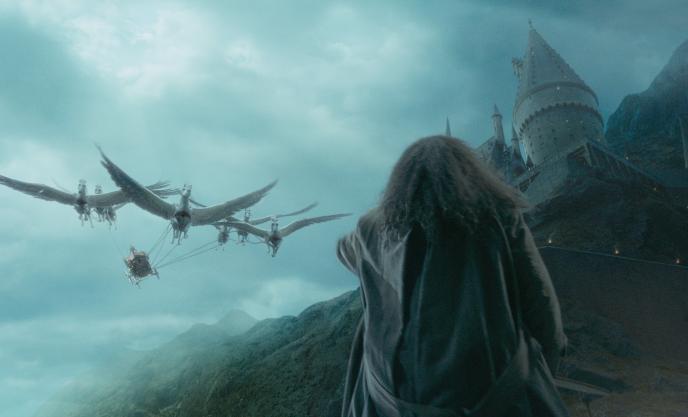
'The biggest challenge was the sheer number of big challenges'
Included amongst Framestore's sequences was the dramatic arrival of the Beauxbaton team's carriage, drawn by seven Pegasus creatures. The team were able to return to much of the geometry they had created when building Buckbeak, the widely-acclaimed Hippogriff for the third Potter film. The creatures were substantially tweaked in order to create the flying horse form, and the results are spectacular, with shots of the coach and seven creatures being among the first to be used in teasers for the film.
The journalist Rita Skeeter appears for the first time in Goblet of Fire, a tabloid journalist and muckraker. Working as she does in the world of magic, her pen could not be anything less than a magical quill which takes dictation without being held, jumping across the page as people speak. Of course, a gutter journalist's pen is going to have its own ideas about what's occuring, and will write accordingly. Imbuing this little object with a character all it's own in the space of just 19 shots was an enjoyable challenge for Framestore's animators.
Similarly, using hand-drawn animation rather than relying overly on computers, gives a stained-glass window that comes to life during a scene between Harry and Moaning Myrtle a much more natural and beautiful look.
Looking back on 18 months work, from first conversations to final delivery, spent by 130 Framestore artists and technicians, Tim Webber is philosophical. 'The biggest challenge', he says now, 'was the sheer number of big challenges'.
